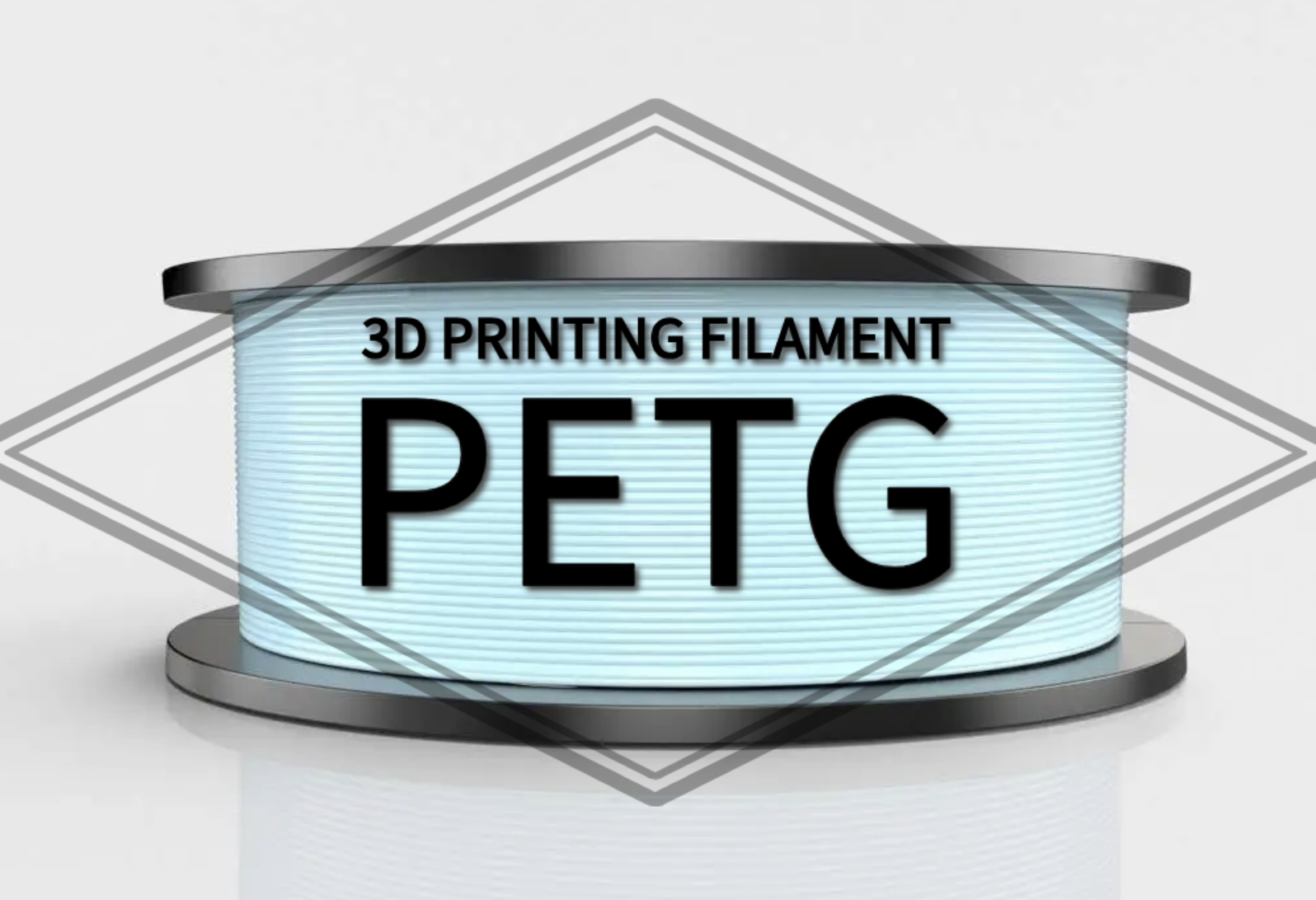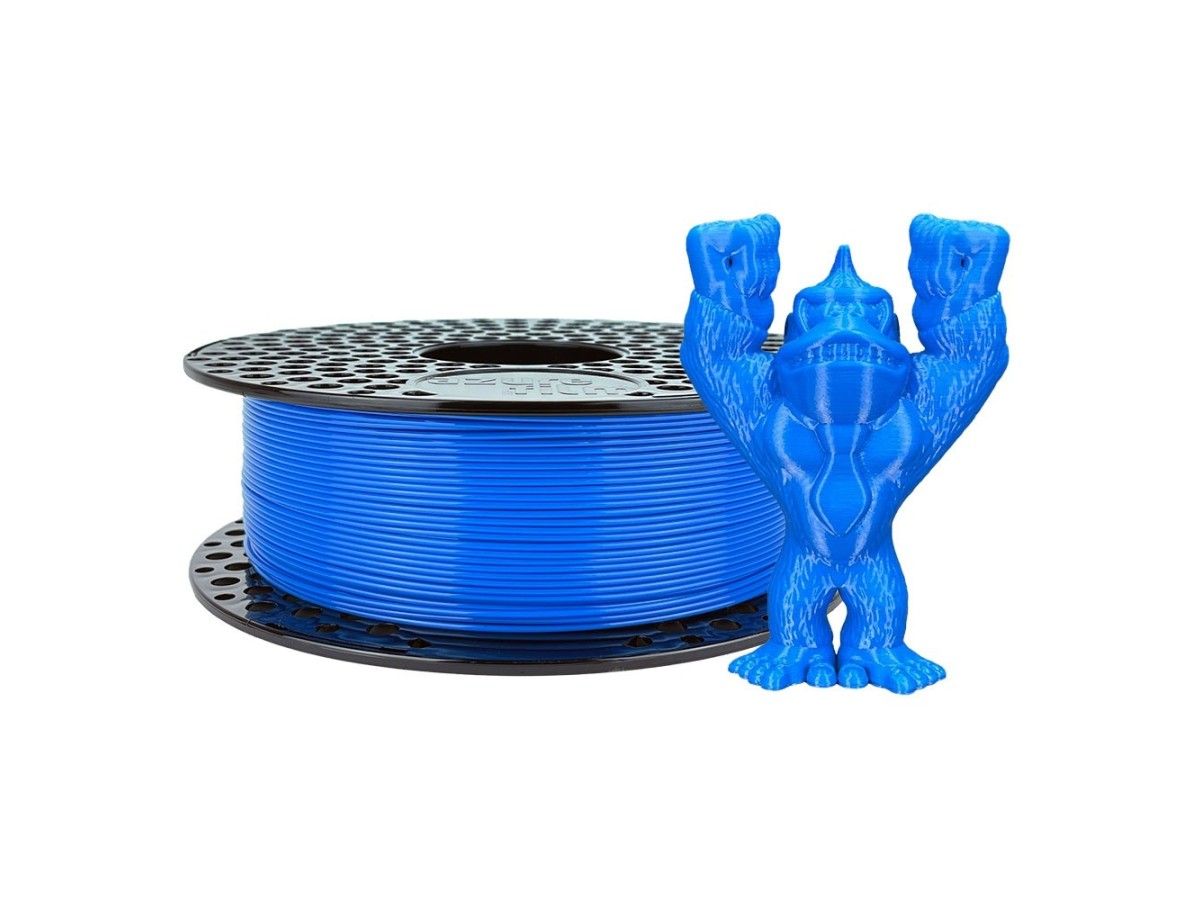3D Printing Filament PETG: What Makes It Special?

Learn everything about PETG 3D printing filament and why it's a top choice for 3D printing enthusiasts.
Introduction
PETG is a popular 3D printing filament known for its durability, flexibility, and ease of use. It combines the best qualities of PLA and ABS, making it a versatile choice for both beginners and professionals.
In this guide, we’ll discover why PETG is a favorite filament, its unique properties, and how to get the best results when printing with it.
what is 3D Printing Filament PETG?
PETG, or Polyethylene Terephthalate Glycol, is a thermoplastic polymer made from polyethylene terephthalate (PET) and glycol. It is a copolymer that combines the strength and chemical resistance of PET with the flexibility of glycol.
Composition of PETG
Polyethylene terephthalate (PET): A polyester formed from terephthalic acid and ethylene glycol. PET is known for its strength, durability, and chemical resistance.
Glycol: A type of alcohol with a hydroxyl group (-OH) attached to each carbon atom. Glycol adds flexibility and toughness to the polymer.
Key Properties of PETG Filament
Durability: High impact resistance and wear durability, ideal for functional parts.
Flexibility: Balanced rigidity and flexibility, reducing brittleness compared to PLA.
Chemical Resistance: Resistant to water, acids, and alkalis for chemical-exposed parts.
Low Warping: Minimal shrinkage during printing ensures accurate and reliable prints.
Clarity: Available in transparent forms for clear or translucent parts.
Heat Resistance: Can withstand temperatures up to 80°C, making it suitable for heat-exposed applications.
UV Resistance: Good resistance to UV light, suitable for outdoor use.

Source: 3do.eu
Benefits and Limitations of 3D Printing Filament PETG
Pros of PETG Filament
Ease of Printing: User-friendly, striking a balance between flexibility and durability.
Strong and Durable Prints: Ideal for functional parts requiring toughness and stress resistance.
Great for Functional Prototypes: Durable and chemically resistant for real-world testing.
Wide Range of Applications: Suitable for consumer products, industrial parts, and more.
Minimal Post-Processing: Produces smooth, glossy prints with strong layer bonding.
Environmentally Friendly: Recyclable and emits minimal harmful fumes during printing.
Versatility in Appearance: Available in opaque and transparent, allowing for both functional and decorative use.
Affordable and Accessible: Cost-effective and widely available for various projects.

Limitations of PETG Filament
Lower Temperature Resistance: While PETG has better heat resistance than PLA, it still can't handle extremely high temperatures, making it unsuitable for high-heat environments.
Stringing and Oozing: PETG can suffer from stringing during printing due to its viscosity, which may require fine-tuning of print settings.
Surface Finish: While PETG prints with a glossy finish, it may not offer the same surface smoothness or sharp details as PLA or ABS without post-processing.
Bed Adhesion Issues: PETG can sometimes stick too well to the print bed, making removal difficult and increasing the risk of damaging the print surface.
Higher Moisture Absorption: PETG is hygroscopic, meaning it absorbs moisture from the air, which can affect print quality if the filament isn’t stored properly.
Slower Printing Speeds: Compared to PLA, PETG often requires slower printing speeds for optimal results, which can increase overall print time.
Less Stiffness: PETG is more flexible than PLA, but this flexibility can be a disadvantage for projects requiring stiffer, more rigid parts.
PETG Filament vs. Other Materials
Feature | ||||
|---|---|---|---|---|
Strength | High strength and impact resistance | Moderate strength, more brittle | High strength but more prone to cracking | High flexibility, moderate strength |
Flexibility | Semi-flexible, less brittle | Low flexibility, rigid | Low flexibility, rigid | Very flexible, rubber-like properties |
Heat Resistance | Good (up to ~80°C) | Low (~60°C) | Excellent (up to ~105°C) | Moderate (~80°C) |
Ease of Printing | Easy, but may need fine-tuning | Very easy, beginner-friendly | Moderate, requires heated bed | Difficult, requires specific tuning |
Warping | Low warping | Very low warping | High warping without proper settings | Very low warping |
Surface Finish | Glossy, smooth | Matte or glossy | Matte, rougher | Matte or rubber-like finish |
Moisture Sensitivity | Hygroscopic, must be stored properly | Slightly sensitive to moisture | Low moisture sensitivity | Highly hygroscopic |
Durability | Durable, strong | Less durable, brittle | Strong and durable | Extremely durable, flexible |
Environmental Impact | Recyclable but not biodegradable | Biodegradable, eco-friendly | Not biodegradable | Recyclable, not biodegradable |
Cost | Moderately priced | Inexpensive | Moderate to expensive | Moderate to expensive |
PETG vs. PLA
Strength: PETG is stronger and more impact-resistant than PLA, making it ideal for functional parts that need durability.
Flexibility: PETG has some flexibility, reducing brittleness, whereas PLA is more rigid and prone to cracking under stress.
Heat Resistance: PETG offers better heat resistance (up to ~80°C), while PLA begins to soften at around 60°C, limiting its use for heat-exposed parts.
Ease of Printing: PLA is easier to print overall, with less fine-tuning required. PETG is relatively easy but may need adjustments to prevent stringing.
Environmental Impact: PLA is biodegradable, making it more eco-friendly, while PETG is recyclable but not biodegradable.
Best Use Cases:
PETG is better suited for functional prototypes, mechanical parts, and outdoor applications.
PLA is more suited for simple, decorative prints or educational purposes due to its ease of use and lower strength requirements.
PETG vs. ABS
Strength: Both PETG and ABS are strong materials, but PETG is more impact-resistant, while ABS is prone to cracking under high stress.
Flexibility: PETG is semi-flexible, offering a good balance between rigidity and flexibility. ABS is more rigid and less forgiving when it comes to bending.
Heat Resistance: ABS has a higher heat resistance (up to ~105°C), making it a better choice for high-temperature environments.
Ease of Printing: ABS is more challenging to print due to high warping and the need for a heated bed and an enclosure. PETG prints with less warping and doesn’t require an enclosure.
Durability: ABS is known for its toughness, especially in industrial and mechanical applications, but PETG offers similar durability with easier printing.
Best Use Cases:
PETG is suitable for functional parts, outdoor components, and high-stress environments.
ABS is better for automotive parts, tool handles, or items exposed to higher temperatures.
PETG vs. TPU
Strength: PETG is stronger and more rigid than TPU, which is more flexible and elastic.
Flexibility: TPU is highly flexible and rubber-like, making it suitable for soft, flexible parts, while PETG is semi-rigid.
Heat Resistance: Both materials have similar heat resistance (~80°C), but TPU retains flexibility under moderate heat.
Ease of Printing: PETG is easier to print, whereas TPU requires precise tuning due to its flexible nature, which can lead to clogging or feeding issues.
Applications: TPU is perfect for applications requiring flexibility, like gaskets or phone cases, while PETG is better for parts that need strength and durability.
Best Use Cases:
PETG is ideal for structural parts requiring strength.
TPU is great for flexible parts like seals, phone cases, or shock-absorbing components.
How to Print with PETG: Tips and Best Practices
Printing with PETG filament requires a few adjustments compared to other materials. Here are some key tips:
Temperature
Set the nozzle temperature between 230-260°C. Start at the lower end and increase as needed based on flow and adhesion.
Bed Temperature
A heated bed is recommended, especially for larger prints. Set it to 70°C-90°C to improve adhesion and reduce warping, ensuring stable first layers.
Adhesion
Use a build plate adhesive like glue stick or hairspray, or opt for a textured surface such as PEI or glass. Ensure the first layer is slightly squished for better adhesion.
Cooling
Start with the cooling fan at 30-50% for the first few layers, then increase to 60-100% for the rest. This balance helps maintain part strength while enhancing layer quality.
Enclosures
Consider using an enclosure to stabilize the temperature around the print. This minimizes warping and improves part quality, particularly for larger or complex prints.
Post-Processing
PETG can be sanded, painted, or machined after printing for further customization. These methods enhance both the appearance and functionality of your prints.
Common Applications for PETG Filament
PETG's versatility makes it suitable for a wide range of applications, including:
Functional Prototypes
PETG is excellent for creating functional prototypes due to its accurate dimensional stability and material characteristics, allowing designers to effectively test form, fit, and function before production.

Source: 3drevolution.com
End-Use Parts
In sectors like automotive, aerospace, and consumer products, PETG is often used to manufacture end-use parts. Its strength, durability, and chemical resistance make it ideal for components that must endure demanding conditions.
Models and Figures
Hobbyists and collectors appreciate PETG for producing detailed models and figures. Its clarity enables stunning visual effects, and it supports the creation of complex shapes and designs for artistic display.
Custom Accessories
PETG is great for crafting personalized accessories and gadgets. From custom phone cases to unique tools, its ease of customization allows individuals to bring creative ideas to life.
Engineering Components
Engineers utilize PETG for components requiring specific mechanical properties, such as impact resistance and flexibility. This makes it suitable for both prototyping and functional use in various engineering applications.
Other Variations of PET
While PETG is the most common variation, there are other PET-based filaments available:
PET: Similar to PETG but generally less flexible and more prone to warping.
PET-CF: PET reinforced with carbon fiber for increased strength and stiffness.
PET-GF: PET reinforced with glass fiber for improved dimensional stability and heat resistance.
Conclusion
PETG filament offers a versatile and reliable option for 3D printing, providing a balance of strength, flexibility, and clarity.
By following the appropriate printing techniques and considering its applications, you can achieve high-quality results with PETG.
Unionfab: Your Trusted Source for PETG Filament
At Unionfab, we specialize in providing top-quality PETG filament and expert 3D printing services.
Contact us to experience the difference!

